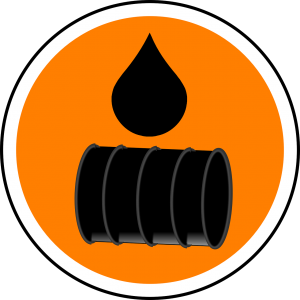Underground Storage Tanks May Create Environmental and Liability Risks for Condo Associations
By John Shaffer, Esq.
Do you have LUST? Not “in your heart,” as former President Jimmy Carter once confessed, but buried underground, somewhere in your condominium community? That ‘LUST’ is an acronym for “Leaking Underground Storage Tanks,” either currently in use or abandoned long ago, that could have leaked and may still be leaking fuel oil, gasoline or other toxic substances. Few condominium communities have underground tanks. You won’t typically find them in new construction, because developers who installed fuel storage tanks usually installed them in basements rather than underground, specifically because of concern about leaks. But you may find USTs, abandoned or still in use, in condominiums that were converted from old apartment buildings or commercial structures and now represent serious environmental and health concerns and potential liability risks for community associations.Toxic leaks from your tank won’t pollute only the soil in your condominium; the leaks can migrate, polluting adjacent properties and emitting vapors that could penetrate the basements and lower levels of buildings on neighboring sites as well as your own. Leaks can also seep into the groundwater, increasing the health and liability risks exponentially. The owner of a leaking tank would be responsible for the clean-up costs as well as for any health-related problems resulting from the leak. And most insurance policies have pollution exclusion clauses that would preclude coverage for these damages.
Few condominium communities have underground tanks. You won’t typically find them in new construction, because developers who installed fuel storage tanks usually installed them in basements rather than underground, specifically because of concern about leaks. But you may find USTs, abandoned or still in use, in condominiums that were converted from old apartment buildings or commercial structures and now represent serious environmental and health concerns and potential liability risks for community associations.Toxic leaks from your tank won’t pollute only the soil in your condominium; the leaks can migrate, polluting adjacent properties and emitting vapors that could penetrate the basements and lower levels of buildings on neighboring sites as well as your own. Leaks can also seep into the groundwater, increasing the health and liability risks exponentially. The owner of a leaking tank would be responsible for the clean-up costs as well as for any health-related problems resulting from the leak. And most insurance policies have pollution exclusion clauses that would preclude coverage for these damages. Leaks aren’t a theoretical concern; The Massachusetts Department of Environmental Protection (DEP) tallied 69 UST “releases” in the state last year alone, and that’s despite strict enforcement of regulations that have been in place for more than 20 years.
Leaks aren’t a theoretical concern; The Massachusetts Department of Environmental Protection (DEP) tallied 69 UST “releases” in the state last year alone, and that’s despite strict enforcement of regulations that have been in place for more than 20 years.
State and Local Regulations Apply
Although the federal Environmental Protection Agency (EPA) has jurisdiction over USTs, the agency has delegated its oversight authority to states that have stricter regulations, and Massachusetts is one of them. Additionally, some municipalities — especially on the Cape, where groundwater pollution is a serious concern ―have regulations stricter than the state’s. The state and local regs are detailed and extensive, covering the design, installation, operation, and maintenance of the tanks, as well as their removal. The regs also establish extensive procedures for reporting and dealing with leaks.Any community with an underground tank, either currently in use or long-abandoned, must be aware of both the state and local regulations governing it. Of particular note, the state DEP has revised its regs to require tanks installed after March of 2008 to have double-walled, fiberglass re-enforced plastic or meet comparable consumer safety standards. Old, single-wall steel tanks, which don’t meet these standards, must be permanently “closed” or removed by August 7th of this year. The DEP regs apply to tanks with more than 10 percent of their volume underground that have a piping system, have a capacity of more than 1100 gallons, and store hazardous materials or have stored them in the past. (Some local regulations apply to smaller tanks, and so may capture systems that aren’t covered by the state regulations.)Although the state regs permit “closing” an abandoned tank, they don’t encourage that option. Closure is permitted only if the tank is located under a building and can’t be removed without removing the building, or if it can’t be removed without “endangering the structural integrity of another UST system, structure, underground piping or underground utilities.” An engineer would have to verify those conditions and DEP officials would have to agree with that finding before closure would be allowed. To close a tank, you would have to remove all remaining liquid or solid material in it, fill it with “clean sand, a concrete slurry mix” or another material approved by DEP, and follow all state, local and federal regulations governing the disposal of hazardous waste.
To close a tank, you would have to remove all remaining liquid or solid material in it, fill it with “clean sand, a concrete slurry mix” or another material approved by DEP, and follow all state, local and federal regulations governing the disposal of hazardous waste.
Removal Encouraged
For most communities, removing the tank will be the most feasible and most cost-effective choice. As with closure, the first step is removing and disposing of the hazardous substance, after which, the regs require the owner to:
- “Render the UST system inert” and secure all openings;
- Conduct a comprehensive assessment of the site, to identify any polluted soil that must be removed;
- “Backfill” the excavation area; and
- Notify DEP within 30 days that the system has been removed.
Associations removing their tanks will also have to comply with local removal regulations, which sometimes require the approval and oversight of the Fire Department or other safety officials.Because the liability risks are so great, we advise association clients that have unused underground tanks to have them removed, or at least test them periodically to ensure their structural integrity. We also think testing and/or removal is a good idea even for tanks that aren’t covered by the regs, because the association would still face liability risks if these tanks begin to leak.Associations should also be concerned about the hidden risks posed by underground tanks they haven’t discovered. If your condominium was converted from apartments, commercial or industrial buildings, or was built on a site used previously by commercial or industrial businesses, the board should review property records and DEP records (or hire someone to do this research for you) to determine if there are or may be abandoned tanks on your property.The research required may be costly, but it will be worth the price for the peace of mind it will buy (knowing you don’t have an abandoned tank) or the opportunity it will give you to address a problem before it becomes much larger and far more expensive.
